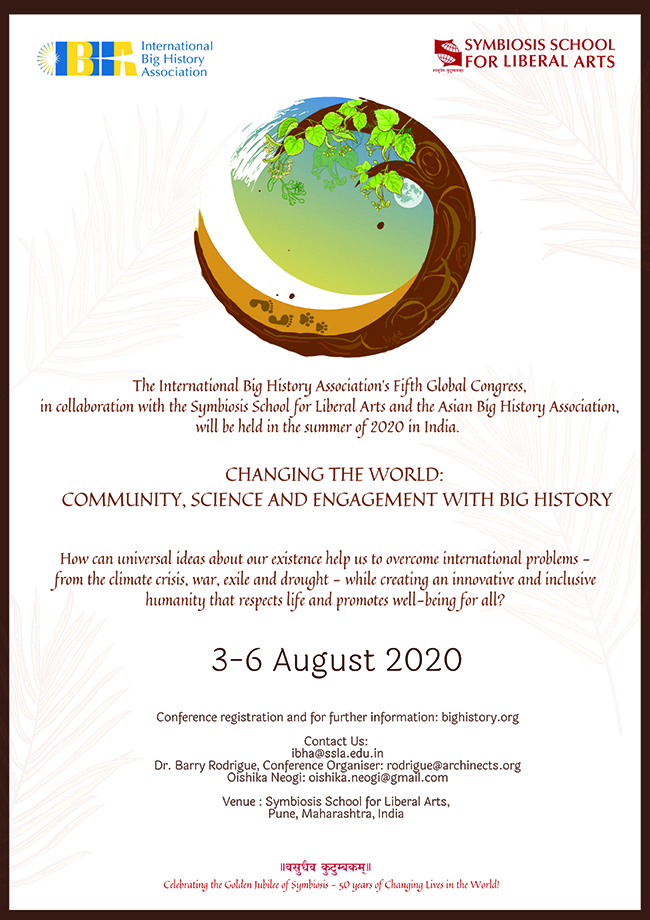Origins highlights the many activities, projects, and reflections that IBHA members have on Big History.
- “Dine’è (Navajo) Creation Story” by Don Mose, Jr.,
- “Seeing the Forest through the Genealogical Trees” by Dave LePoire
- “Tragedies of the Nuclear Age Are Still with Us” by Barry Wood,
- “The Demise of Native Americans” by Annalia Martinez
- The primary-based, online Big History learning Program
- Big Architecture
Volume XI Number 1 features “Big History Around Us” by David J. LePoire
 |
|||||||

|
|||||||
 My Cosmic Story: The Dark Energy by Noha Tarek My Cosmic Story: The Dark Energy by Noha TarekPlease click on this link (a pdf version is here) for this profound personal reflection of a journey into big history by a graduate student from Egypt, who says “My B.Sc. and M.Sc. are in the discipline of political science. I have been working also in the field of political and social research. However, my learning, revolutionary activism, and life experiences far transcends any limits reductionistically imposed by capitalist professionalism. I currently aim to rewriting, learning, and healing with disadvantaged groupsdirect my path toward – especially children, to continue transforming our collective consciousness into a new de/civilization!” |
|||||||
| Human History in a Hurry: From the Birth of the Earth to the Accelerating Anthropocene David Bryson invites response at davidbry@ktc.com about his ambitious new project, about which he shares his thoughts here. |
|||||||
|
Origins of the IBHA: Tenth Anniversary
by Lowell Gustafson
In August of 2010, Alessandro Montanari and Walter Alvarez hosted a workshop at the Osservatorio Geologico de Coldigioco, Italy with geological fieldtrips for a group of scholars from various disciplines and continents. Coldigioco was a fitting place to meet for people who all conduct inquiries in their own ways about development over time. The motto of the observatory there is “Ex Libro Lapidum Historia Mundi” (Out of the book of rocks comes the history of the world). Sandro and Walter brought the group to a number of nearby locations where they explained how the rocks we viewed told a history of the cosmos, Earth, and life. It was near the beautiful city of Gubbio, in the Apennine Mountains, where Walter first discovered the evidence of a catastrophic impact of an asteroid about 65 million years ago. Later work showed the collision caused the Chicxulub crater on the Yucatán Peninsula in Mexico and global effects that brought the age of dinosaurs to an end. This event opened up space for the evolution of mammals, eventually leading to humanity.
A thin layer of iridium near Gubbio Italy told skillful geologists about how the stories of the cosmos, Earth, life, and humanity are intertwined. Artist Paula Metallo helped the group at Coldigioco visualize some of the meanings for us of a past that is layered in ancient sea beds that are now mountains. Geology and astronomy, painting and narrative, the sciences and the humanities, intertwined in a dynamic, expanding universe of knowledge. Together, they told a story that does run through Rome to be sure, but also much further back than its ancient empire, through the Apennine Mountains. The experience at Coldigioco clarified for everyone there that the past is not restricted to the time since humans developed writing. That more recent past is best understood by its being placed within the entire known past as told to us by stones, as well as by fossilized bones, blood, and light. Big history carries us on a most improbable journey from the big bang through stars, Earth, life, and eventually humanity. The realities it presents are a marvel.
Since then, the small group has grown to an association with hundreds of members who have held conferences in the United States, Italy, the Netherlands, and next summer in India. A Journal of Big History publishes peer reviewed scholarship and Origins, the group’s bulletin, shares IBHA members’ reflections and expressions. Each unique IBHA member has their own story of how they fit into – and contribute to – a cosmic story of 13.82 billion years, an Earth story of 4.567 billion years, and a human story of 300,000 years. And the IBHA has its own story whose origin took place at the Coldigioco Geological Observatory where we learned the history of the world from the library of the rocks. |
 |
||
| The new book, Big Ideas: A Guide to the History of Everything, narrates the history of the universe, Earth, life, and humanity while analyzing how grand stories about the past, present, and future are crafted and framed. In it, authors Cameron Gibelyou and Douglas Northrop create a novel framework for thinking about the history and future of everything. They grapple throughout the book with issues at the intersection of the natural sciences, history, literature, philosophy, religion, and the humanities. In nine elegantly written chapters, they attempt to make a reasoned analysis of worldviews that underlie historical writing across many fields. Look into it here. | ||
Caminos de secularización: Reseña sobre MacroHistoria & Mundo Actual I |
||
| César Duque-Sánchez (Universidad del Rosario, Colombia) |
Aleandra Mina (Universidad del Valle, Colombia) | Andrea Torrealba Torre (Universidad Nacional Autónoma de México) |
| Michelle Lacoste Adunka (Universidad Católica de Chile) |
Lilia Martínez (Universidad Autónoma de México) |
Santiago Forero (Universidad Javeriana, Bogotá, Colombia) |
| Read more about this major big history conference held in Colombia. | ||
| 2021 Conference in India | Read about David Jones’ book, Nature of Science, which focuses on “not only what we know but on how we know what we know.” He also wrote a 700 page supporting ebook which is widely used by teachers and students for a course on this important topic. | |
| Draft Program | ||
| Look back to a Forum on Big History from 2009. Articles by Craing Benjamin, Fred Spier, Jonathan Markley, Walter Alvarez, David Christian, Barry Rodrigue, and more. | ||
 Please plan on participating in this conference either in person in India or over the internet. |
| Wanna be a penpal? Suzie Starshine is looking for one. |
| Origins: Vol X Issue 5 |
 |
 |
||
| In this creative short story, “The Illusionists,” Lacy Loar-Gruenler shares her account of how Kurt Gödel and Albert Einstein “murdered” time. Or did they? The text is available here. | ||
| 2021 Conference in India | Evolution of the Human Brain-Mind Complex by Ravi Sadana | |
| Draft Program | ||
| 2021 Guidebook to India | Living Earth Community | Corona Verse, by Nanette Fondas |
 |
| Origins: Vol X Issue 4 |
 |
||
| Corona Verse, by Nanette Fondas | Big History in the Italian middle schools: a manifesto against knowledge fragmentation, by Paolo Vismara, YouTube presentation, Big History Italia | |
| Take a journey into Deep Time! | Andrey Korotayev | The 21st Century Singularity and the Future of the World: A Big History Perspective, Book | |
| Take a Big History Course! | Big History from Crash Course | |
| Big History from University of Amsterdam | Big History from Macquarie University | Big History from Kahn Academy |
 |
| Dear Friends of Big History,
We have important news to share with you in light of the Covid-19 Pandemic. We have postponed the 2020 Big History Conference to next year, 2021, and will be adding an exciting worldwide digital component to it. We warmly invite you to the newly re-scheduled big history conference that will be held from 1–5 August 2021. With Barry Rodrigue at the helm as organizer, the conference will convene at the Symbiosis School for Liberal Arts in Pune, Maharashtra, India. The theme of the conference is even more important than ever– Changing the World: Community, Science, and Engagement with Big History. How should we draw on the sciences in order to engage with the pressing dilemmas of our time, how can we place our own issues within the context of Big History, how do we consider the ways to change the world and build more nurturing, healthy communities? We need to recover a vision of our common humanity and fashion together a shared future. We will need your help with these urgent questions at our 2021 conference. The conference will follow the format as planned. One of the exciting developments is the addition of an interactive digital component that will allow for electronic engagement around the planet. After the conference, there will be a choice of seminars for folks to attend around India, which highlight the theme of world change through our communities. Please check in at https://bighistory.org/ to see the latest information on the 2021 big history conference. We ask that you continue to sign up for the conference online. All those who have signed up so far are continued to the 2021 event. Anyone with questions, please contact our organizer, Barry Rodrigue, at rodrigue@archinets.org. We look forward to seeing you in India just over a year from now! |
 |
 Volume IX Number 2 features: Volume IX Number 2 features: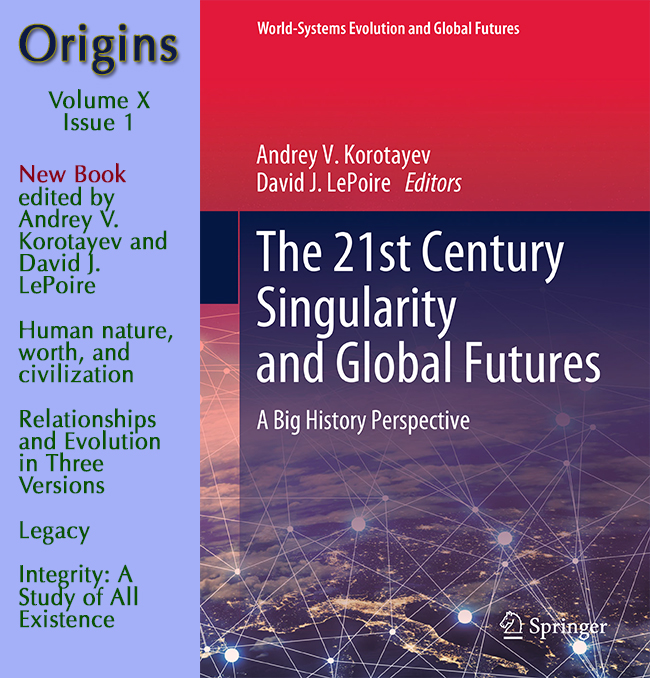 |
||
| Human nature, worth, and civilization by Robert Dalling | ||
| The complete updated version of his Big History book, Human nature, worth, and civilization, and a day-by-day listing of the contents of the author’s high school course in Big History. The book is detailed and contains the topics that every student should know about ourselves and about today’s world of business, government, and religion. Followed by links to the video version of this book. | ||
| Relationships and Evolution in Three Versions by James Tierney | ||
| Two new reflections by our well known IBHA colleague. | ||
| Legacy by Sam Mackintosh | ||
| A moving reflection on science, big history and meaning for his grandchildren – and the rest of us. | ||
| Integrity: A Study of All Existence by Barry H. Rodrigue | ||
| Professor Rodrigue was invited to give a talk in the Knowledge Sharing Session organized by the Asset Management Division, Ministry of Education Malaysia when he visited Malaysia earlier this year. He is an International Coordinator for both the International Big History Association (IBHA) headquartered in the United States and the Asian Big History Association (ABHA) based in India. |
||
| Bulletin Integriti Siri 2 Tahun 2019 | ||
| Bulletin of the Kementerian Pendidikan Malaysia | ||
| The 21st Century Singularity and Global Futures A Big History Perspective, Editors: Andrey Korotayev and David LePoire | ||
| Offers a multidisciplinary understanding of historical trends, technological change, and evolutionary processes Studies the dynamics of accelerating change and evolution in the ‘Big History’ framework Presents global history as a holistic process, rather than a combination of separate evolutionary processes. Explores the phenomenon of the long-term historical trend towards a near-term singularity. This book introduces a ‘Big History’ perspective to understand the acceleration of social, technological and economic trends towards a near-term singularity, marking a radical turning point in the evolution of our planet. It traces the emergence of accelerating innovation rates through global history and highlights major historical transformations throughout the evolution of life, humans, and civilization. The authors pursue an interdisciplinary approach, also drawing on concepts from physics and evolutionary biology, to offer potential models of the underlying mechanisms driving this acceleration, along with potential clues on how it might progress. The contributions gathered here are divided into five parts, the first of which studies historical mega-trends in relation to a variety of aspects including technology, population, energy, and information. The second part is dedicated to a variety of models that can help understand the potential mechanisms, and support extrapolation. In turn, the third part explores various potential future scenarios, along with the paths and decisions that are required. The fourth part presents philosophical perspectives on the potential deeper meaning and implications of the trend towards singularity, while the fifth and last part discusses the implications of the Search for Extraterrestrial Intelligence (SETI). Given its scope, the book will appeal to scholars from various disciplines interested in historical trends, technological change and evolutionary processes. |
||
| One purpose of the IBHA is to provide a place for members and friends of big history to share their work and thoughts on this line of inquiry. Please submit articles and other material to Origins, Editor, ibhanet@gmail.com The views and opinions expressed in Origins are not necessarily those of the IBHA Board. Origins reserves the right to accept, reject or edit any material submitted for publication. Submissions of academic articles should be made to the Journal of Big History at jbh@bighistory.org |
||
| 3 – 6 August 2020 Big History Conference in Pune, Maharastra, India.
|
||
|
||
Volume IX Number 1 features the exposition, “Connecting Castileblanco with the Cosmos” by Imogene Drummond, “Conference Encounter” by Yvonne Fritz, “The Emergent Oratorio Soars” by Steven Gorosh, “Big History Meets the Montessori Method” by Lucy Laffitte, and “Do Humans Have a Purpose on Earth?” by James Tierney.
Volume VIII Number 4 features “Is there an Argentine Big History?” by Gabriel Gromadzyn and “Reflections on Religion and Big History” by Yvonne Fritz.
Volume VIII Number 3 features “Interdisciplinarity & Big History: Introduction to the March 2018 Big History Conference in Pune India” by Nivedita Nair, “A Global Guideline for Humanity” by Anaga Krishna, “Snapchats from Maharashtra in March 2018” by Lucy B. Laffitte, information about the July 2018 IBHA conference, the candidates for the 2018 IBHA Board, and “Deep Big History” by Duane Elgin.
Volume VIII Number 2 features “Who is the African child?” by Nganfon Eric of the African Big History Association, A review by Barry Wood of The Big History Timeline Wallbook, American Museum of Natural History, 2017, by Christopher Lloyd & Patrick Skipworth, Illustrated by Andy Forshaw, and information about “The Study of All Existence: SSLA Conference on Interdisciplinarity and Big History,” March 23rd and 24th, 2018, Symbiosis School for Liberal Arts, Pune, Maharastra, India
Volume VIII Number 1 features the forming of the African Big History Association, and information on the 2018 IBHA conference.
Volume VII Number 3 features Philip Day’s article on Disease in Big History, David Christian’s honorary degree from North Carolina State University, the Big History Talk Concert in South Korea, and Heathe Kyle Yeakley’s explanation of the new IBHA website.
Volume VII Number 2 offers La Gran Historia by Dr. Olga García Moreno and 21st Century Challenges: On some forecasting inferences of big history by Akop P. Nazaretyan, as well as A Review of Dava Sobel, The Glass Universe by David Chuss.
Volume VII Number 1 includes “The Seamless Robe of Nature,” by Barry Wood, and a report by Giovanni Abrami on the Milan Symposium of Big History.
Volume VI Number 12 features the Big History curriculum at Broome Senior High School in Australia.
Volume VI Number 10 / 11 was a special issue on Maria Montessori: an example of Big History in Primary Education.
Volume VI Number 9 features “Human Learning and the Development of Mind in the Anthropocene: Reflections against the Backdrop of Big History” by Jan Visser of the Learning Development Institute & Stellenbosch University.
Volume VI Number 8 is in memoriam of William H. McNeill. It also introduces The Patterning Instinct: A Cultural History of Humanity’s Search for Meaning by Jeremy R. Lent.
Volume VI Number 7 announces the first issue of the Journal of Big History for January 2017, Perspectives of a New Periodization for Big History by Giovanni Abrami, notice of Big History: Small World by Cynthia Stokes Brown, and Big History in India by Shweta Sinha Deshpande.
Volume VI Number 6 features Big History as an On-line Course by Doug Karo, Applying Big History: Nature, War and Peace by Osamu Nakanishi, and Universal Studies and Big History in Japan by Osamu Nakanishi and Nobuo Tsujimura.
Volume VI Number 5 features Kyle Herman exploring the match between the Montessori teaching philosophy and Big History, as well as Mandella S.E. Jap-A-Joe’s piece on the Little Big History of the Eiffel Tower.
Volume VI Number 4 includes Dr. Joseph Voros of Swinburne University of Technology discussing the future – and the Big History program at Willem de Zwijger College in the Netherlands.
Volume VI Number 3 highlights “The Stained Glass of Chartres Through the Lens of Big History” by Julia Rathmann-Bloch and notice of The Biggest Picture: From the Big Bang to the Development of the Big Bang Theory by Wendy Curtis.
Volume VI Number 2 includes “Big History is not an all encompassing world view” by Fred Spier and a link to “Energy Flows in Low-Entropy Complex Systems” by Eric J. Chaisson.
Volume VI Number 1 features “Empiricism Is Not A Dirty Word” by Elise Bohan, and “The Meaning of Big History, Philosophically Speaking” by Cynthia Stokes Brown.
Volume V Number 12 includes “Myth, Meaning, and Scientific method in Big History” by William Katerberg, “Cosmos in the Classroom” by Dustin Eirdosh, poetry by Todd Duncan, notices of new publications by Akop Nazaretyan and Giovanni Abrami, and more.
Volume V Number 11 presents “Discovering Big History: An Unorthodox Journey” by Robert H. Moore, “Big History and the Stovepipe Implosion” by Ken Baskin, the new Coursera on-line Big History course by David Christian, David Baker and other faculty at Macquarie University, and a review of Paula Metallo’s show, Mogli e Buoi… (Wives and Oxen).
Volume V Number 10 features “Big History of Calcium: Life’s Actuating Element” by Frans Verstappen, “What I Learned on My Summer Vacation: Flying through Big History in One Week” by Lucy B. Laffitte, “Big History is Asia,” and notice of the new publication From Big Bang to Galactic Civilizations: A Big History Anthology, Volume I; Our Place in the Universe; An Introduction to Big History edited by Barry Rodrigue, Leonid Grinin and Andrey Korotayev.
Volume V Number 9 provides information about the 2016 IBHA conference and announces the publication of From Big Bang to Galactic Civilizations: A Big History Anthology and the Fonty project on ChronoZoom.
Volume V Number 8 includes “TACTILE TEACHING: Models for “Teaching Museums” at three San Francisco Bay Area Universities” by Lanier Graham, CSUEB & Institute for Aesthetic Development.
Volume V Number 7 includes “Big Art History: The Beginning of a Personal Voyage” by Joshua Fisher, Assistant Professor of Art, Arkansas Tech University; and “Perspective, Gratitude, and Wonder: Revelations in Big History” by Kyle Herman, Community Montessori, New Albany, Indiana.
Volume V Number 6 presents Introducing Big History to the general public by popular lecture series: The Little Big History of the Nalón River (Asturias, Spain) by Olga Garcia Moreno; Columbus’ Measurements by Fred Spier; and “The Scenario of Cosmic Evolution” by Eric J. Chaisson.
Volume V Number 5 is dedicated to the memory of Dr. Ji-Hyung Cho.
It also features “Big History Meets Psychology: An Investigation of Psychological Practice in Light of the Origin Story of Our Time” by Marc W. Ross, PhD; “Did Galileo overstate the magnification of his telescope 16 times?” by Fred Spier; “What I’m Doing on My Summer Vacation: Teaching Big History in a Two-Week Course—Eek!” by Lucy B Laffitte, Ph.D.; “High-redshift proto-clusters candidates: Planck finds a gold mine” by Luigi Toffolatti, and more!
Volume V Number 4 includes a classic article on “Evolutionary Process: An Organizing Principle for General Education” by John A. Mears; “Researching a New Scholarly Field: The Case for Big History” by Abel A. Alves, and more!
Volume V Number 3 highlights the classic article “The Gentle Art of Scientific Trespassing” by Walter Álvarez, information on The Big History Summer Institute at Dominican University of California, and “Big History in the Larger World” by Bill Cox.
Volume V Number 2 features “E Pluribus Unum” by Chris Corbally, SJ, and Margaret Boone Rappaport; “International Relations and Big History: My Personal Account” by Maarten Oranje; “Responses to Rich Blundell’s IBHA presentation on “Shakespeare in the Cave: A Big History of Art;” “Defining Big History in a Scale Free Universe” by Camelo Castillo; and more.
Volume V Number 1 features A Short History of Fire, A Path the the Big History Community, and Big History, World History, and Opera.
Volume IV Number 12 features Jonathan Yavelow’s work on Science Appreciation, Sustainability, and Big History.
Volume IV Number 11 features an exchange about the direction of the field of Big History.
Volume IV Number 10 highlights a notice of the July 15 – 17, 2016 IBHA conference in Amsterdam, as well as images and responses to the 2014 conference, along with talking points about Big History.
Volume IV Number 9 presents “Time, Nature, and Humanity: Climate Science, Big History, and Our Global Future,” by John L. Brooke, Humanities Distinguished Professor of History and Adjunct Professor of Anthropology, Ohio State University; “Science and / or Story Telling?” by Bill McGaughey; “In Contact with Big History,” by Anne-Marie Poorthuis, Stichting Eigentijdse Verbindingen and Jos Werkhoven, Uitgeverij De Arend.
Volume IV Number 8 presents “On Power: George Lucas, Jerry Garcia, and Barack Obama’s Big Black Helicopters” by Richard B. Simon; “Big History on Youtube” by David Baker; “The first introductory book to Big History in Japanese” by Nobuo Palette Tsujimura, and “Teaching & Researching Big History:
Exploring a New Scholarly Field,” the new book edited by Leonid Grinin, David Baker, Esther Quaedackers, and Andrey Korotayev.
Volume IV Number 7 includes reflections by Big History faculty at Dominican University of California on teaching the new field, and “What role has nothingness played in Big History? Nothing, in Particular,” by John Paton.
Volume IV Number 6 includes “Birth of the Biosphere” by Jan Zalasiewicz, and “A Little Big History of a Big Historian” by Esther Quaedackers.
Volume IV Number 5 features “Encore des Buffonades, mon cher comte?” by Jan Zalasiewicz, a response to “Towards a Theory of Big History” by Matthew McConnell.
Volume IV Number 4 “Towards a Theory of Big History” by David Blanks, “Big History’s Greatest Lesson?” by David Gabbard
Volume IV Number 3 Articles by Carlos Eduardo Sacchi and Jennifer Morgan.
Volume IV Number 2 Layers within Layers: Complexity Built Upon Complexity by Jonathan Markley; The Life and Works of Antonio Vélez Montoya by Natalia Vélez Lopera; Dances with the Earth: Geophonic Music from the Stratigraphic Record of Central Italy by Gabriele Rossetti and Alessandro Montanari
Volume IV Number 1 Protein Folding, Pteropods, A Chacterization of the IBHA, The Study Road, Big History Songs Enlarging History
Volume III Number 11, Globalization, ChronoZoom in China, Big History Project, History Channel, Colbert Report. The IBHA Members’ Newsletters highlight the many activities, projects, and reflections that IBHA members have on Big History.
Volume III Number 10, Part 2 of Cosmic Safari.
In Volume III Number 9, we are pleased to highlight Christian Jennings and his “Cosmic Safari: From African History to Big History.” Please also note the Call for Papers and Panels for the 2014 IBHA conference. We look forward to seeing you in California in August!
In Volume III Number 8 of the International Big History Association Newsletter, we are pleased to highlight:
- the recent publication of Big History: Between Nothing and Everything,
- the First Big History Student Research Conference,
- the IBHA Board Elections,
- Teaching Big History,
- The Universe Verse Kickstarter Campaign, and the
- Call for Papers: 2014 IBHA Conference.
Volume III Number 7 highlights Joseph Voros’ review of Al Gore’s book, The Future: Six Drivers of Global Change, notice of the 2014 IBHA Conference at Dominican University of California, and the highly anticipated first edition of Big History: Between Nothing and Everything by David Christian, Craig Benjamin, and Cynthia Brown.
Volume III Number 6 highlights Barry Rodrigue’s work on Big History with East Asian scholars (on pages 1 – 10), an essay on “Big History and Big Politics” by Lowell Gustafson, who is the IBHA Secretary (11 – 24), the Students’ Big History Research Conference at the University of Amsterdam in June (25-26), the August 2014 IBHA Conference at the Dominican University of California (27), and the highly anticipated first edition of Big History: Between Nothing and Everything by David Christian, Craig Benjamin, and Cynthia Brown, available August 30, 2013 (28).
Volume III Number 5 highlights the Big History program at the Institute of World and Global History, Ewha Womans University and its director, Seohyung Kim, Melanie Aranka Dominique During’s painting, “Eye Catcher,” Michael and D’Neil Duffy’s piece on the IBHA for Montessori Life, Craig Benjamin address to award winning GVSU stiudents and faculty, and the forthcoming text from McGraw-Hill: Big History: Between Nothing and Everything.
Volume III Number 4 highlights IBHA Board Member, Walter Alvarez of the University of California, Berkeley (pp 1-5). Roland Saekow gave presentations on ChronoZoom in China (p 6). Dana Visalli has taught Big History in Afghanistan (pp 7-9). Metanexus is sponsoring the One Day Universe (p 10) and IBHA member Jennifer Morgan gave the keynote address, telling the Big History story to the American Montessori Conference attended by 3,000 (pp 11-12).
Volume III Number 3 features an essay on sustainability in China by Sun Yue (pp. 1- 4), two book reviews by Cynthia Brown (p. 5), notices of Metanexus’ One Day Universe ( p. 6), a new book by Akop P. Nazaretyan(pp. 7-9), a collage of images presented by Leslye Allen of a Grand Valley State University Big History trip (pp. 10-20 ), and the Graduate Student Big History Research Conference (p. 21).
Volume III Number 2 highlights one of the pioneers of Big History, Dr. John A. Mears of Southern Methodist University, the Big History Summer Institute, held each year at Dominican University of California, and concludes with a reminder about the First Students’ Big History Research Conference and a conference wrap – up session montage put together by Leslye Allen.
Volume III Number 1 highlights Sun Yue of the Global History Center at Capital Normal University in Beijing, China and Melanie During, who studies Big History at the University of Amsterdam.
Volume II Number 9 highlights Neal Wolfe of Dominican University of California and Constance van Hall and the Big History program at Roland Holst School in Hilversum in the Netherlands.
Volume II Number 8 highlights Ken Gilbert and Tracy Sullivan.
Volume II Number 7 highlights Cathy McGowan Russell’s work on “Generous Genes and Teaching the Big History of Life” as well as reflections by David Christian and Fred Spier on our inaugural conference in Michigan last month. We have a few of the wonderful pictures of the conference taken by Nathan Everett. Please note the call for papers from The International Society for the Study of Time for its Fifteenth Triennial Conference on “Time and Trace,” June 30 – July 6, 2013. And we conclude with a chance to order IBHA t-shirts.
Volume II Number 6 highlights the timespirals of IBHA member Karen Kudebeh and the forthcoming volume, From Big Bang to Global Civilization: A Big History Anthology, co-edited by Barry Rodrigue, Leonid Grinnin, and Andrey Korotayev, to be published in 2013 by the University of California Press.
Volume II Number 5 highlights information about the August IBHA conference and the first in a series on graduate study of Big History, featuring David Baker.
Volume II Number 4 begins with a note from our President, David Christian. We follow this with a piece on the newly launched, revised version of Chronozoom, information about the August 2012 IBHA conference, and conclude with a note on IBHA member Connie Barlow.
Volume II Number 3 features Russell M. Genet of California Polytechnic State University and Cuesta College, and an Interview with William Grassie, the founder of the Metanexus Institute
Volume II Number 2 highlights The Stone Age Institute of Indiana University, Bllomington, IN and Nicholas Toth and Kathy Schick.
Volume II Number 1 highlights the First Year Experience in Big History program at Dominican University of California
Volume I Number 6 highlights Michael Duffy, D’Neil Duffy, Jennifer Morgan, and James Lu Dunbar.
Volume I Number 5 highlights Eric J. Chaisson and Nobuo Palette Tsujimura.
Volume I Number 4 highlights Cameron Gibelyou and Barry Wood.
Volume I Number 3 highlights the Center in Moscow for the study of Big History and Systems Forecasting as a part of the Institute of Oriental Studies (Russian Academy of Sciences).
Volume I Number 2 highlights IBHA member Erika Gronek, children’s Big History book author.
Volume I Number 1 of the newsletter highlights Lawrence A. Husick.

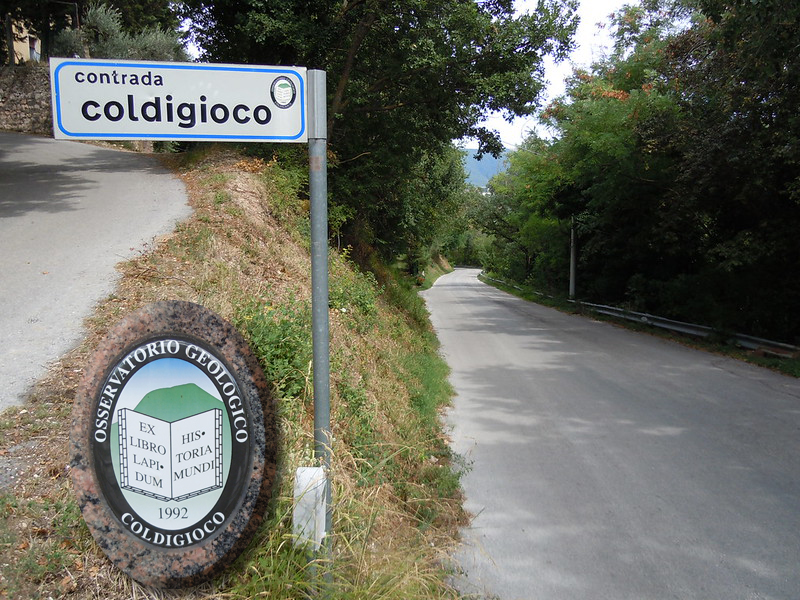
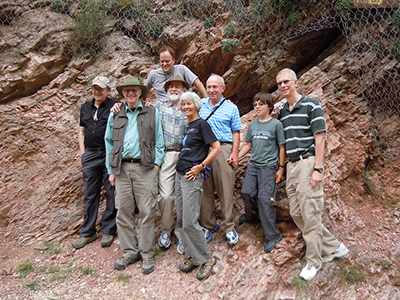
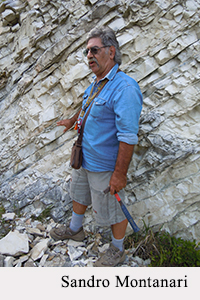 Everyone at Coldigioco knew that many others shared their passion for this large sense of how the past has brought us to the present, and catapults us towards the future. So the group sat around Sandro and Paula’s patio table on a number of warm Italian summer afternoons and hammered out the founding of an International Big History Association (IBHA). The vision was for an association in which people from all disciplinary backgrounds and life conditions could contribute to an evidence-based narrative of the natural record of the entire known past and reasoned projections of the future. And in the evenings, after wonderful meals of pasta and wine, Walter and other participants played music on the piano, gently strummed guitars, and sang under a hazy moon. Rigorous science, creative artistry, measurable evidence, beauty, and the delight of sharing interests all entwined.
Everyone at Coldigioco knew that many others shared their passion for this large sense of how the past has brought us to the present, and catapults us towards the future. So the group sat around Sandro and Paula’s patio table on a number of warm Italian summer afternoons and hammered out the founding of an International Big History Association (IBHA). The vision was for an association in which people from all disciplinary backgrounds and life conditions could contribute to an evidence-based narrative of the natural record of the entire known past and reasoned projections of the future. And in the evenings, after wonderful meals of pasta and wine, Walter and other participants played music on the piano, gently strummed guitars, and sang under a hazy moon. Rigorous science, creative artistry, measurable evidence, beauty, and the delight of sharing interests all entwined.
